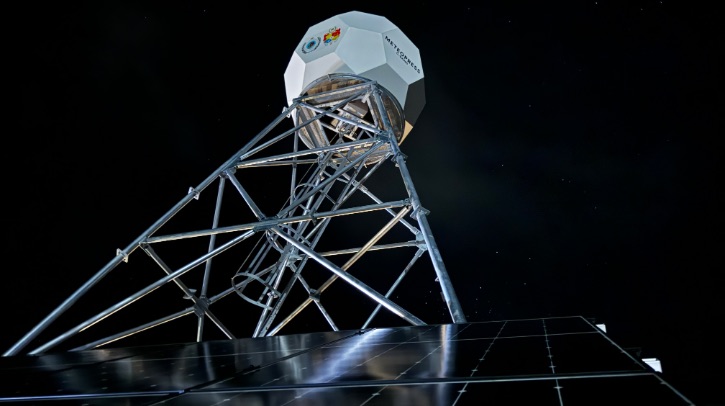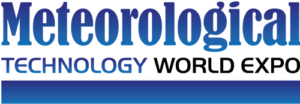Meteopress has deployed a solar-powered C-band radar in Tonga, taking just 70 days from contract signature to deployment.
According to Meteopress, a different approach was needed to provide Tonga with the required radar coverage because traditional radars require local infrastructure, which is not often available. Additionally, a big focus of the project was sustainability. This is why a solar-powered C-band solid state radar was selected, the company says, adding that rapid manufacturing, immediate delivery and fast deployment were also crucial aspects of the project.
The Tonga Radar Project
Ofa Fa’anunu, director of meteorology at Tonga Meteorological Services, first identified weather radar as the number one infrastructure need in the region in the 2023 meeting of a Pacific Meteorological Council in Fiji.
Meteopress’s current project contract for the first radar in Tonga was then signed in May 2024 with New Zealand the donor party. The end customer selected a full-package turn-key solution. Meteopress supplied the Solid State C-band radar, 10m lattice tower, AI-REN software and last-mile delivery in the form of a website display for the public.
The entire radar system was tightly packaged in a way that it could be expressly transported by air freight, including the tower, which was designed in short segments so it could be transported by air. This enabled cutting the transportation time from five months to three weeks. The deployment of a complete system took another two weeks and was performed in July 2024.
Futureproofed sustainability
To ensure the sustainability of a radar project for 15-20 years, the company avoided non-functional tube-based radars that have expensive spare parts after maintenance contracts expire.
Instead, it ensured that the design enabled remote control, fixes and upgrades. This was facilitated by the Meteopress ReProBox – Remote Protection Box. The ReProBox’s sole task is to access, check and communicate with every radar component. The entire Meteopress radar system is software-based, meaning all components have firmware and can be reached and managed remotely by the ReProBox. This design ensured that the radar remains functional and up-to-date, even in remote locations.
The device also features an independent backup battery and communication system, ensuring it can reach the radar at any given moment, even if the radar itself loses power or communication. This enables real-time monitoring of every component’s status. It also supports remote upgrades and firmware fixes for the components. This functionality means the team can perform both preventative and corrective maintenance remotely, resulting in unparalleled availability and reliability of radar data.
Remote Island solution
Meteopress radars can also run fully independently from local infrastructure. These radars have ultra-low power consumption, with less than 1kW needed for a 1° beam width C-band radar. This efficiency means that powering the radar with just a few solar panels is feasible, making it ideal for remote or underdeveloped areas where reliable power sources are scarce.
Furthermore, Meteopress radars perform signal processing directly on the radar pedestal. This optimizes the data stream, ensuring efficient use of GSM or Starlink communication systems. By minimizing dependence on local power grids and leveraging advanced communication technologies, Meteopress ensures continuous and reliable radar operation regardless of the local infrastructure. This independence not only enhances the radar’s versatility but also significantly reduces operational costs, making it a sustainable and cost-effective solution for diverse environments.
Design for simplicity
The simplicity of design, availability of spare parts and remote support through any available communication, including WhatsApp, empower local teams to maintain and repair the radar. This means that a basically skilled, non-specialized technician can perform both corrective and preventative maintenance on the radar.
This approach is intended to significantly lower operational costs, increase the radar’s uptime and extend its overall lifespan. By making maintenance accessible and straightforward, Meteopress ensures that even in remote or underdeveloped areas, the radar can continue to function reliably without the need for highly specialized personnel. This democratization of maintenance is not only to make radar technology more sustainable but also to empower local communities to take control of their weather monitoring capabilities.
Weight
Instead of attaching the radar’s antenna to the pedestal by their end, Meteopress positioned the antenna at the center of the radome and the center of rotation. This design reduces the radome’s size by more than 30%, lowers the weight of the radome and pedestal assembly, and subsequently reduces the type and size of the tower required. The company reports that these improvements have a direct impact on lowering the overall cost of the radar project.
Fully integrated
A complete rethink of all-weather radar components has enabled Meteopress to integrate the entire radar chain, including the transmitter, receiver and signal processing unit, into the pedestal. Meteopress C-band and S-band radars therefore eliminate the need for additional structures below or near the tower. The entire radar system is housed within the radome, leading to cost savings.
Meteopress states that through previous radar tenders it has learned that eliminating tube radar’s lengthy waveguides and rotary joints up and down the tower also saves on costs and preserves power. According to the company, traditional assemblies inevitably lose power through these fragile components, but its design gains as much as 3-4dBi, almost doubling the radar’s power. This not only enhances performance but also reduces the complexity and maintenance requirements, ensuring more efficient and reliable operation over the radar’s lifespan.
AI-powered
A key component of the Tonga project is also AI-REN Radar Enhancing and Nowcasting software. This advanced AI-driven software is designed to provide more precise and timely weather data, enhancing the accuracy of forecasts and warnings. AI-REN leverages machine learning (ML) algorithms and real-time data analysis to improve the detection and prediction of severe weather events.
The AI-REN software ensures interpretation and full use of the radar data generated, especially for customers lacking direct experience with live data. By using high-quality radar data, AI-REN creates detailed weather models that predict weather patterns with remarkable precision, providing lead time for emergency response and risk mitigation.
AI-REN can continuously learn and adapt, refining its algorithms to deliver progressively better performance. Its user-friendly interface offers customizable dashboards and real-time alerts, making advanced weather prediction accessible to both experienced meteorologists and non-specialized personnel.
Level 3 products and AI capabilities help interpret data and generate more precise warnings, enhancing safety and preparedness across various sectors. By harnessing the power of artificial intelligence (AI), Meteopress AI-REN provides more accurate, timely and actionable weather data, ultimately helping to protect lives and property from the impacts of severe weather.
Meteopress will soon be one of the 150+ exhibitors and thousands of attendees at Meteorological Technology World Expo in Vienna on September 24, 25 & 26, 2024. Join them at the free-to-attend exhibition to discover the latest innovations, meet new suppliers and network extensively with the world’s leading meteorological industry experts.




